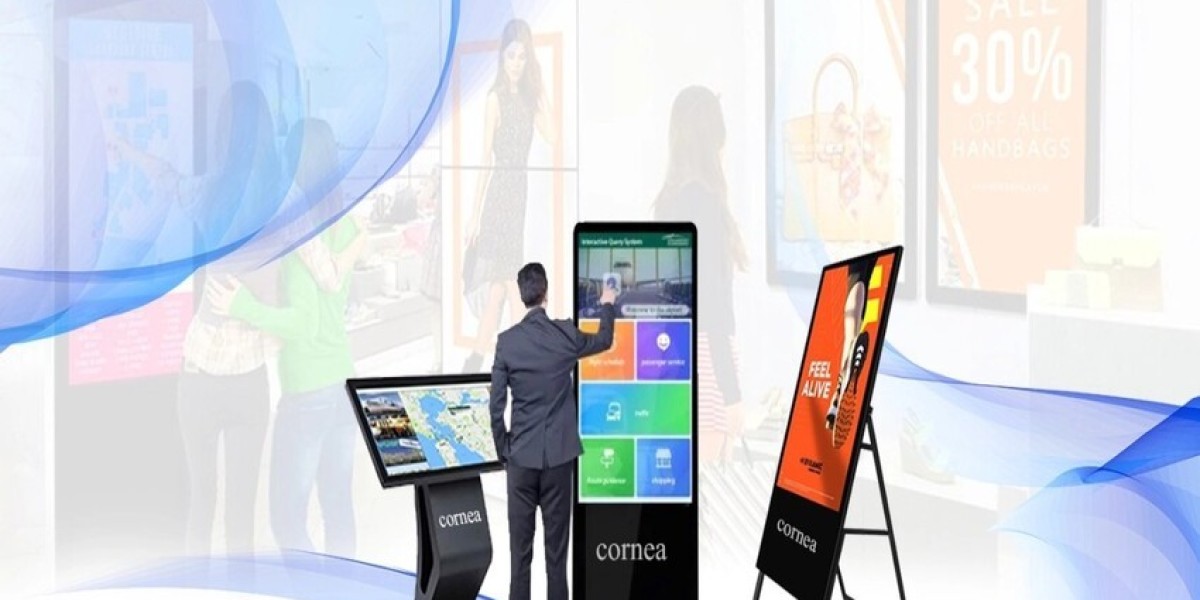Digital signage displays are a powerful tool for communication, marketing, and engagement. However, improper planning or installation can lead to ineffective performance, wasted investment, and technical issues. Understanding the common mistakes businesses make during the installation process can help ensure a smoother deployment and maximize the impact of your signage system.
Choosing the Wrong Location
Poor Visibility
One of the most common errors when deploying digital signage displays is placing them in locations where they simply can’t be seen effectively. Screens tucked behind structural pillars, mounted too high above eye level, or placed in dim, rarely trafficked areas don’t fulfill their potential. Even the best digital signage displays will fall short if they aren’t positioned to capture attention. For maximum impact, screens should be installed where people naturally look, entrances, checkout areas, waiting zones, or eye-level walkways, ensuring the display becomes a focal point.
Lighting Conditions Can Make or Break the Impact
Ignoring Lighting Conditions
Lighting plays a crucial role in how content appears on digital screens. When displays are placed in areas flooded with sunlight or positioned opposite strong artificial lighting, reflections and glare can make them hard to read or completely unreadable. This is where choosing the right display technology matters. The best digital signage displays are equipped with high-brightness panels, automatic brightness adjustment, and anti-glare coatings to combat these issues effectively.
Outdoor digital signage, in particular, must be designed to withstand direct sunlight. Brightness levels of at least 2,500 nits are often necessary to maintain readability. For indoor displays, choosing models with adaptive brightness settings allows content to remain vivid in varying ambient light conditions, creating a more seamless and engaging viewing experience.
Optimizing Location and Light Together
When planning a digital signage installation, always consider both foot traffic patterns and lighting conditions as part of a unified strategy. Combining a high-quality digital signage display with a prime, well-lit location can significantly increase message visibility and audience engagement. By avoiding the pitfalls of poor placement and unsuitable lighting, your signage investment can yield far greater results, providing clear, eye-catching communication exactly where it’s needed most.
Neglecting Audience Targeting
Misunderstanding Viewer Habits
A major error is not considering how your audience will interact with the signage. For example, placing detailed content in a high-traffic area where viewers don’t have time to engage may render it ineffective.
One-Size-Fits-All Approach
Using the same content layout, screen size, and design across all locations without considering demographic and behavioral differences often leads to low engagement rates.
Using Inadequate Hardware
Consumer-Grade Screens
Many businesses opt for consumer TVs instead of commercial-grade displays. Consumer screens are not built for 24/7 use, often lack brightness controls, and can suffer from image burn-in.
Underpowered Media Players
A weak digital signage player can lead to lagging content, synchronization issues, or failure to support high-resolution displays. Make sure the media player matches the performance needs of your setup.
Overlooking Software Capabilities
Choosing the Wrong CMS
Not all content management systems (CMS) are created equal. Selecting a CMS that lacks essential features like remote access, scheduling, or live data integration can limit your content strategy and responsiveness.
Ignoring Scalability
As your business grows, so might your signage needs. Using software that doesn’t scale with additional screens, content zones, or user roles can become a bottleneck.
Skipping Professional Installation
DIY Electrical and Mounting Work
Improper cabling or mounting can cause safety hazards or screen failures. Always rely on certified technicians for electrical setup and mounting, especially for large or high-mounted displays.
Failing to Test Configurations
Another common mistake is not testing configurations before going live. Each display should be tested for resolution, alignment, brightness, and content performance to ensure everything functions as intended.
Not Planning for Maintenance
Lack of Accessibility
If displays are installed in difficult-to-reach locations without easy access panels or service doors, routine maintenance becomes a major challenge. Always consider future maintenance needs during installation planning.
Ignoring Cooling Requirements
Overheating can damage both screens and media players. Poor ventilation and lack of cooling systems can shorten the lifespan of your signage hardware.
Inconsistent Branding and Content
Design Discrepancies
Using inconsistent fonts, color schemes, or design layouts across different displays weakens brand identity. Digital signage should enhance brand consistency with every screen reinforcing your visual language.
Static and Stale Content
Failing to update content regularly makes the signage irrelevant. Ensure there’s a plan for fresh, engaging, and time-sensitive updates that reflect your business objectives.
Underestimating Network and Power Needs
Insufficient Bandwidth
High-resolution video or real-time data feeds require robust network support. Skimping on bandwidth or not using wired connections where needed can lead to display delays or content dropouts.
Power Instability
Lack of proper power backup like UPS (Uninterruptible Power Supply) systems can result in unexpected blackouts or hardware damage. Always assess power reliability and provide surge protection.
Ignoring Legal and Safety Compliance
Local Signage Regulations
Not checking local zoning laws or signage regulations can lead to fines or forced removal of displays. Always review local codes regarding screen brightness, placement, and content restrictions.
Safety Oversights
Failing to follow safety standards during installation, such as improper mounting or exposed wiring, poses hazards to both staff and customers. Always comply with health and safety codes.
Failing to Measure Performance
No KPIs or Analytics
Without performance tracking tools, it’s difficult to determine what’s working. Utilize software that offers engagement analytics, viewer data, and content performance reports to refine your strategy.
Not Acting on Feedback
Even with data, many businesses fail to adjust their approach based on insights. Continuously refine content, display location, and interaction strategies based on measurable results and customer feedback.
Conclusion
Installing digital signage displays is a significant investment in communication and branding. Avoiding common pitfalls, from poor placement and hardware selection to ignoring maintenance and performance tracking, can make the difference between a successful deployment and a failed one. Proper planning, professional execution, and ongoing optimization ensure that your digital signage delivers the value and visibility your business needs.








